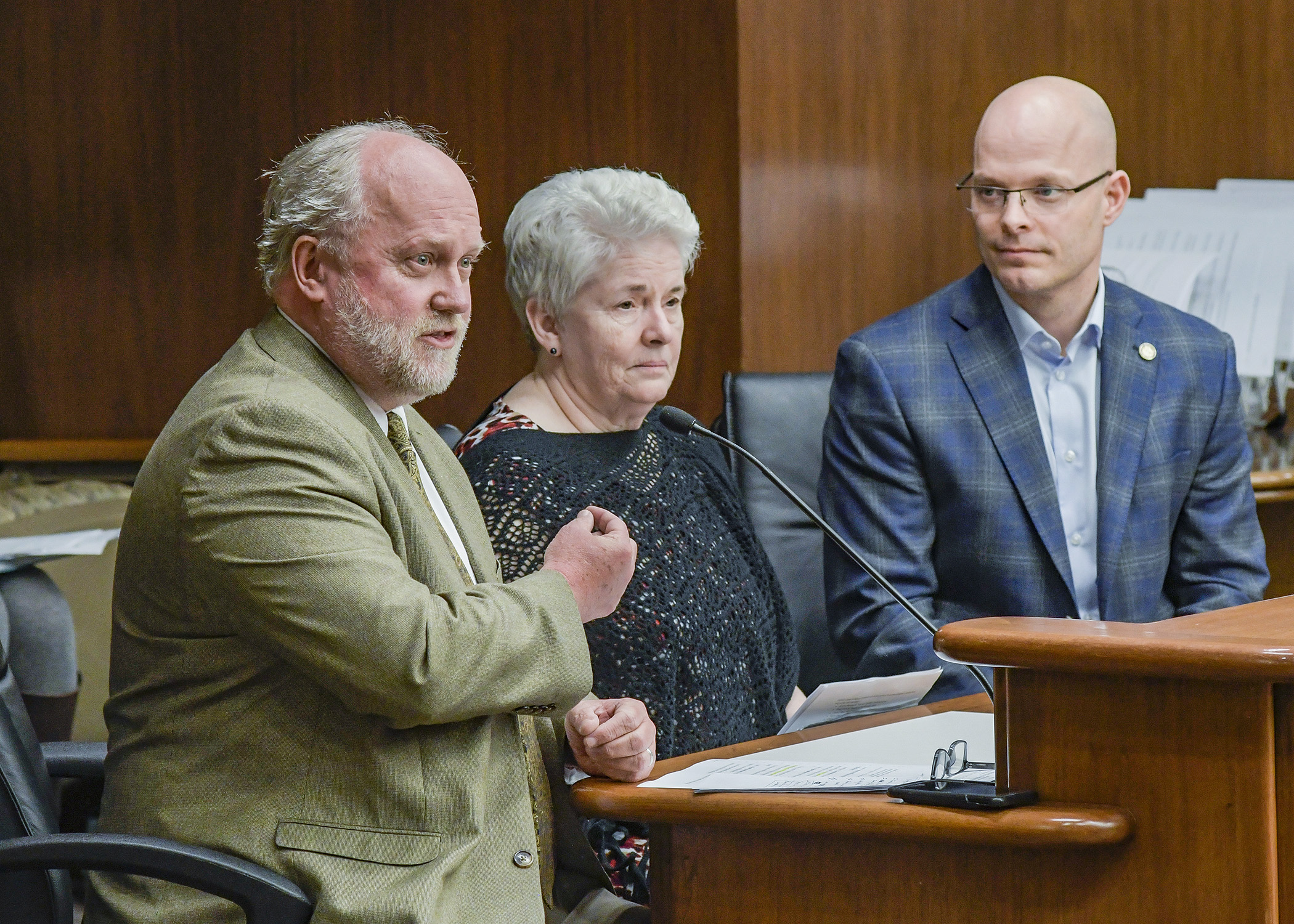State assistance proposed for local response to emerald ash borer

With an estimated 1 billion ash trees in Minnesota, the House Environment and Natural Resources Finance Division heard Tuesday that municipalities are in need of technical and financial help responding to the emerald ash borer.
Sponsored by Rep. Dave Lislegard (DFL-Aurora), HF2015 proposes to establish a matching grant program through the Department of Natural Resources to help communities respond to the threat posed by the invasive pest.
The bill, laid over for possible omnibus bill inclusion, would appropriate $26 million from the General Fund in the 2020-21 biennium to assist with inventory and planning efforts, as well as treatment, removal, disposal, and replacement of infected trees.
“Cities are the front line of where this pest is being dealt with right now,” said Craig Johnson, an intergovernmental relations representative with the League of Minnesota Cities. “… If we do not slow it down, it can be financially impossible for our communities to deal with.”
Quarantines prohibiting the movement of ash wood across county lines are in place in 17 Minnesota counties, Johnson noted. But quarantines only slow the spread of the invasive pest, whose larvae kill the tree by feeding on the inner bark, disrupting the flow of water and nutrients.
If infected trees are not removed, they become a source of continuing infection that can cause large, rapid die-offs, Johnson warned.
“The real long-term issue though is our northern black ash forests, which are 900 million trees and are a major part of the ecosystem of northern Minnesota,” he said. “That is what we are trying to defend right now.”
Grants would also be available to some biomass heating operations, which present the most affordable means for disposing of infected trees, according to Victoria Reinhardt, a Ramsey County commissioner.
Communities are struggling with how to dispose of infected wood, Reinhardt explained. The wood cannot be buried in landfills, nor is open burning an option. Chipping it into mulch does work, but demand is limited.
“This is an issue that is not going away and that we need to be fully engaged in,” Lislegard said.
The companion, SF1906, is sponsored by Sen. Carrie Ruud (R-Breezy Point), and awaits action by the Senate Environment and Natural Resources Finance Committee.
Related Articles
Search Session Daily
Advanced Search OptionsPriority Dailies
Ways and Means Committee OKs proposed $512 million supplemental budget on party-line vote
By Mike Cook Meeting more needs or fiscal irresponsibility is one way to sum up the differences among the two parties on a supplemental spending package a year after a $72 billion state budg...
Meeting more needs or fiscal irresponsibility is one way to sum up the differences among the two parties on a supplemental spending package a year after a $72 billion state budg...
Minnesota’s projected budget surplus balloons to $3.7 billion, but fiscal pressure still looms
By Rob Hubbard Just as Minnesota has experienced a warmer winter than usual, so has the state’s budget outlook warmed over the past few months.
On Thursday, Minnesota Management and Budget...
Just as Minnesota has experienced a warmer winter than usual, so has the state’s budget outlook warmed over the past few months.
On Thursday, Minnesota Management and Budget...
